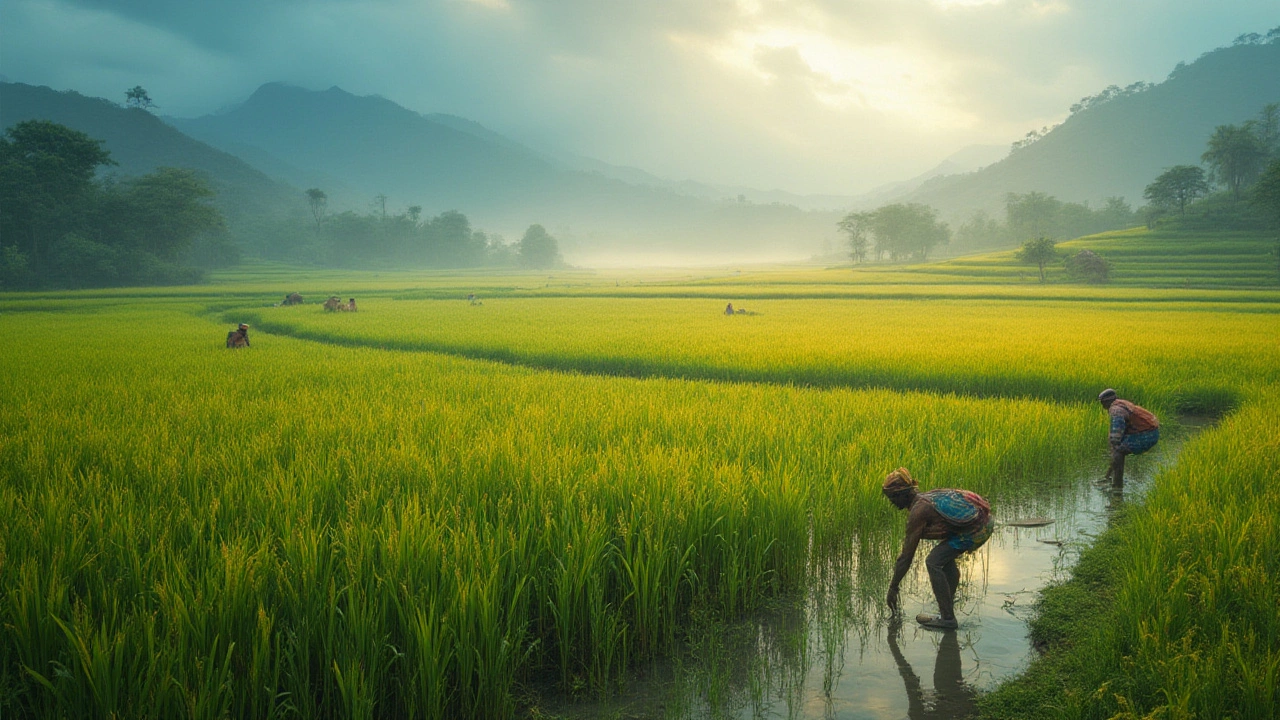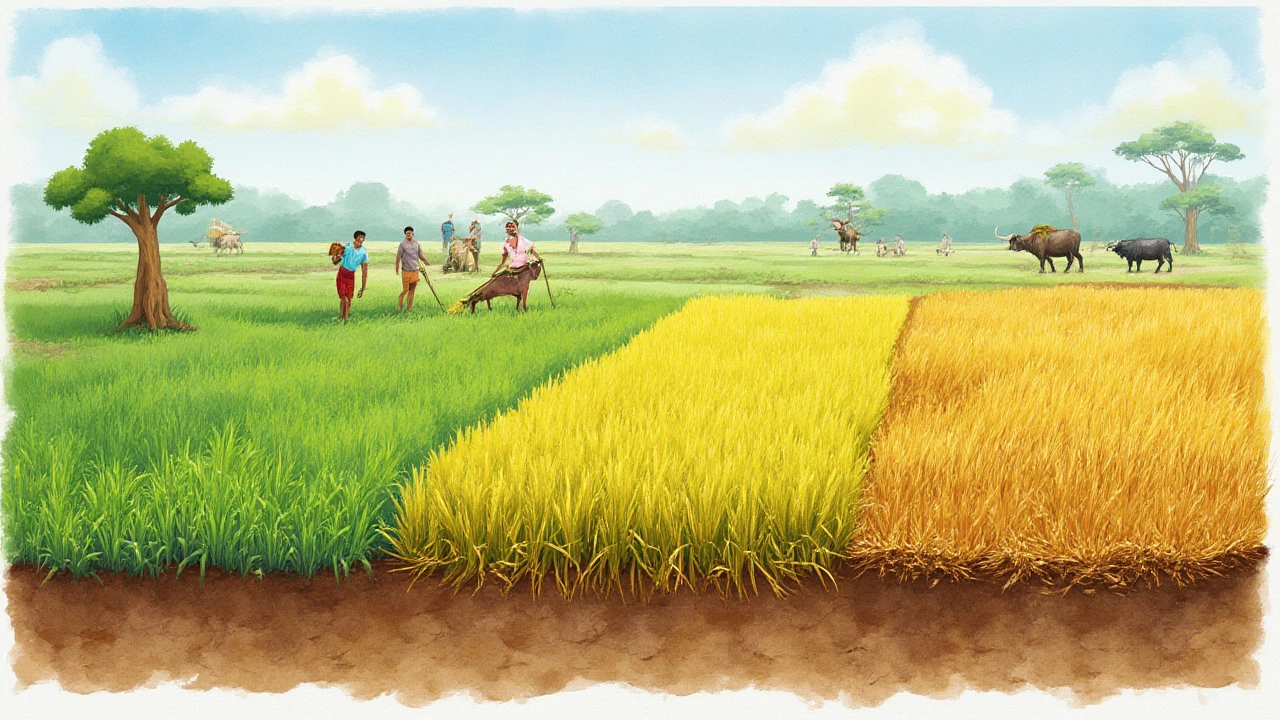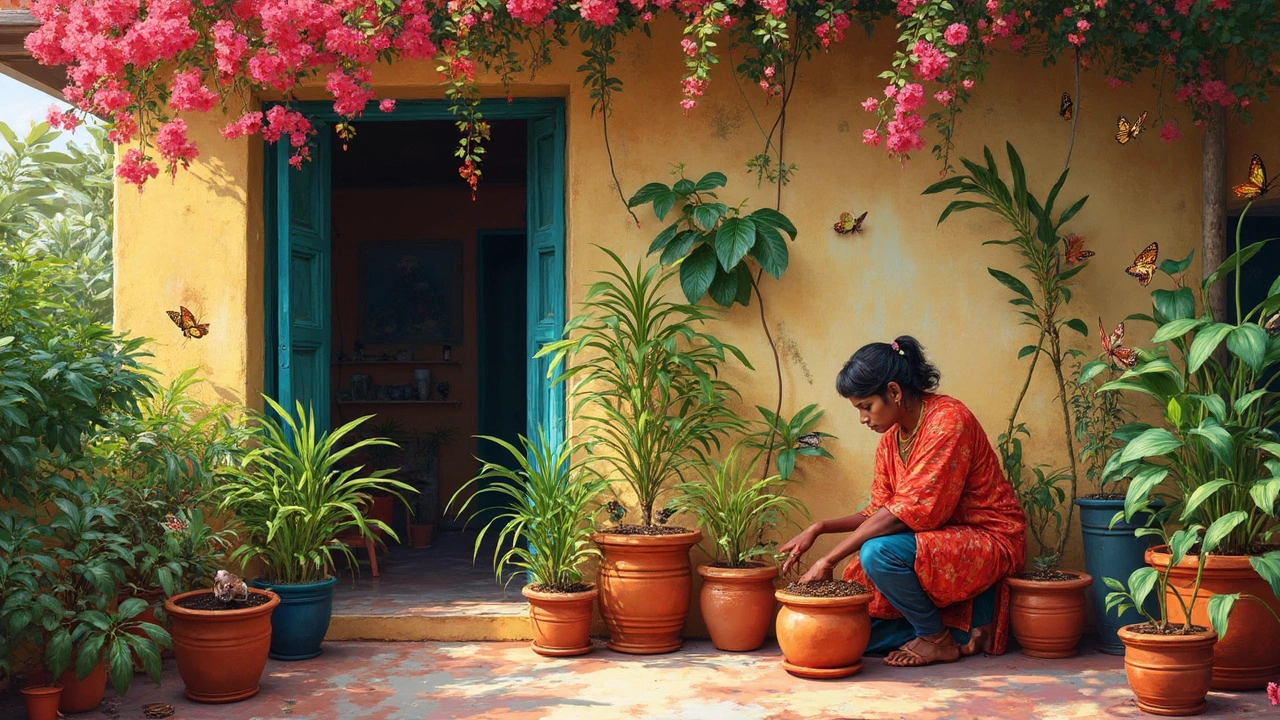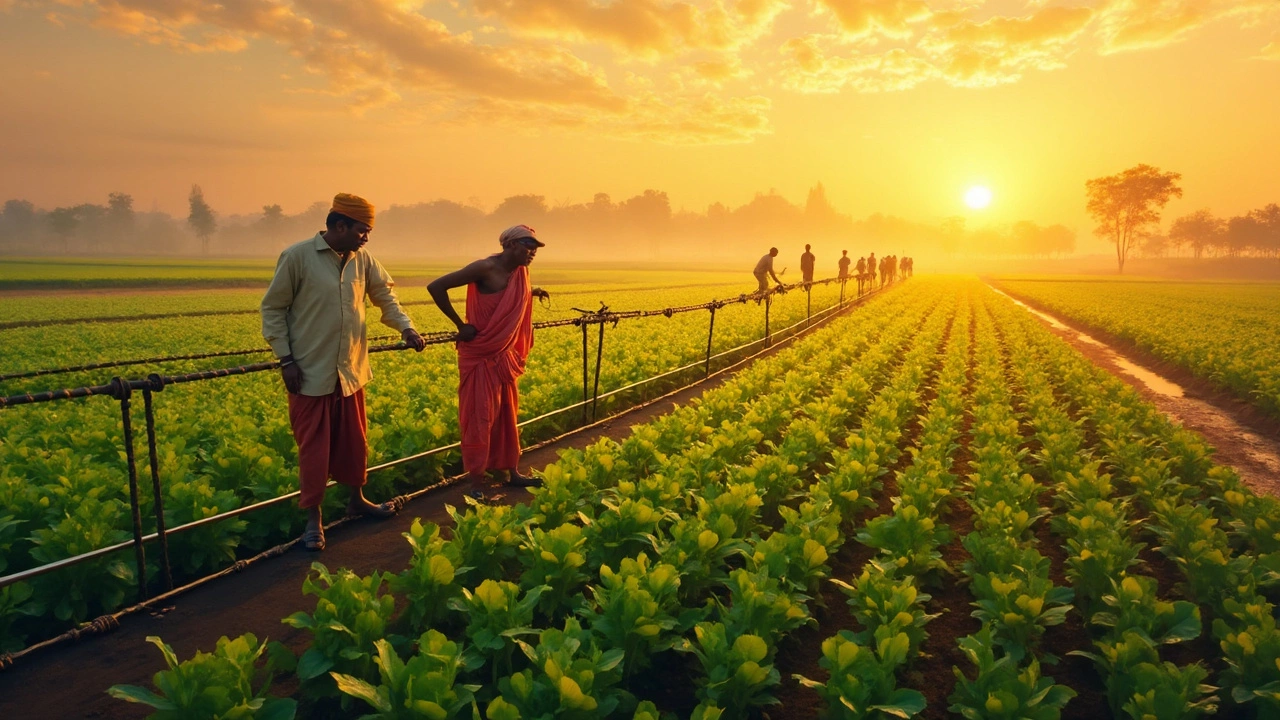Does Rice Grow Back Every Year? Perennial vs Annual Rice Explained

Picture a green rice paddy, the water glimmering, stalks swaying. Most folks assume rice fields just crank out crop after crop, like magic. But dig into the roots—literally—and the answer is a twist: most of the rice you eat is not set up to regrow every year. So if you’re thinking about planting a rice patch in your yard, or you’re just curious why some fields turn brown every year, you’re in for a surprise.
How Rice Grows: The Real Deal Behind Rice's Life Cycle
Rice is usually planted, grown, and harvested within a year. This makes most rice an "annual" crop—meaning it completes its full cycle from seed to harvest in a single growing season. In places like India, China, and the southern United States, farmers transplant young rice seedlings or drop seeds directly into paddies. Water levels stay pretty high, and that’s no accident. Rice loves to keep its feet wet because it drowns most weeds and grows where other grains would rot. But what happens after you harvest? In nearly all commercial rice farming, after cutting the stalks, farmers don’t expect that field to bounce back on its own. They'll prep that plot all over again—plowing what's left, sometimes burning the stubble, then flooding or irrigating, and replanting.
This has been the cycle for thousands of years. The whole routine—from prepping muddy fields to happy harvest dances—repeats every single year. You might see those bright green fields every summer, but after harvest, it’s a clean slate. Only the stubs and roots are left, and they aren’t going to give you another bumper crop on their own. Rice doesn't regrow automatically from the old plant, unlike some backyard herbs or wild prairie grass. There are always outliers, and the story gets interesting when you compare traditional annual rice to some rare breeds that threaten to shake things up for global agriculture.
Annual Versus Perennial Rice: What's the Difference?
If you’re following along, you might be wondering—are there types of rice that grow back year after year? The answer is yes, but these are the exception rather than the rule. Most commercial rice, whether it’s fragrant Basmati, chewy Japanese Koshihikari, or simple long-grain, is annual. Farmers plant it, it grows, it's harvested, then that's that. The plants die back, the field is turned over, and new seeds go in every year.
Perennial rice is a newer, prize-winning twist. Scientists have actually developed strains of rice that regrow from their roots for at least a couple of years after harvest. This rice behaves just like an apple tree or hardy wild grasses; you cut it back and it comes again. The work really got going in China at Yunnan University, where in 2018, researchers released perennial rice lines like PR23. These not only produced two to four harvests from the same planting, but they were also hardier against drought and erosion. Suddenly, a farmer could get rice for two, even five years without tilling and reseeding every season.
Sounds amazing, right? There are catches. Perennial rice is still being perfected, and it's not as widely grown (yet). Most of the world’s rice production is still tied to annual breeds because they’re super productive, familiar, and supported by existing machinery and farm routines. Plus, perennial rice needs a set of climate and soil conditions to regrow reliably. In colder regions, or anywhere frost is an issue, perennial types might struggle. And even where they flourish, weeds and diseases can build up in untouched roots year after year.

What Happens After Rice Is Harvested?
An overlooked step in rice cultivation is what happens post-harvest. Picture a harvested field: all that’s left are short stumps and a muddy mess. In Asia, especially in places with two or even three rice crops a year, fields are quickly replanted. But rice almost never regrows from last year’s stubble—not the way your lawn does after you mow it. Why? Annual rice plants are bred for fast, productive growth. After harvest, the parts of the plant that remain are mostly dead tissue, and what’s left underground is exhausted from pouring all its energy into producing grain. It’s like running a marathon then immediately being asked to sprint; there’s just nothing left in the tank.
There’s a small exception, and you’ll see it if you poke around some flood-prone paddies after harvest: “ratoon” cropping. Sometimes, if the stumps are healthy and weather stays warm, a rice plant can sprout new shoots from the old base. Farmers in South Asia do this as a way to squeeze out a second, smaller crop—kind of a bonus round. But don’t get your hopes up for huge yields; ratoon crops tend to be patchier, and the grains are usually smaller and fewer. The main reason is the same as before: rice just doesn’t stockpile enough fuel in its old stubs to go wild with new growth.
A creamy layer of mud after the harvest helps explain why the old roots rarely send up strong new plants. That mud cakes in, cuts off oxygen, and usually, both heat and water drop as seasons change. Fungi and bacteria swoop in, breaking down what’s left. By the time fresh seeds go in the next spring, what’s left of last season’s crop is little more than fertile mulch.
Growing Rice at Home: Myths, Tips, and Surprises
So if you’re thinking about growing rice in your backyard, can you get it to regrow every year? Unless you seek out perennial varieties or try a ratoon crop, plan to start from seed again each season. For most home gardeners, rice is an annual adventure. The seed catalogues will offer you "upland" rice varieties—these are bred for non-flooded plots and are easier for garden newbies. Plant the seeds in spring after frost is gone, keep the patch moist (but not swimming), and harvest the golden heads when they bow with grain. After you snip off the stalks, don’t expect those stumps to send up fresh stems the next spring. Most gardeners simply clear the patch, compost the leftovers, and note what worked so they can adjust for next year.
If your climate is warm year-round and you really want to experiment, try rooting out info about perennial rice varieties. They’re getting talked about more in gardening circles, but availability is a roll of the dice outside Southeast Asia. If you live in the U.S., specialty seed suppliers might occasionally import a small batch, but you’ll be a pioneer in your area.
For farmers, the regular cycle of plowing, planting, and rotating crops brings big benefits. It busts up weed cycles, buries fungal diseases, and keeps pests guessing. Sticking to annual rice makes pest management and fertilization easier. Commercial growers also appreciate that high-yield annual varieties are backed by decades of research. For anyone with an eye on sustainable farming, perennial rice could change the game—cutting labor, reducing soil erosion, and slashing fuel bills. But until then, most rice, whether in your garden or on your dinner plate, is a crop that demands to be planted new every year.
So, does rice grow back every year? If you’re talking about what’s in your local supermarket, the answer is no—rice doesn’t regrow from its roots year after year. It’s a fresh start each season. But with new research and a few rare breeds, that might slowly shift in the future. Watch this space—you never know when a fresh green paddy is hiding a future food revolution.





